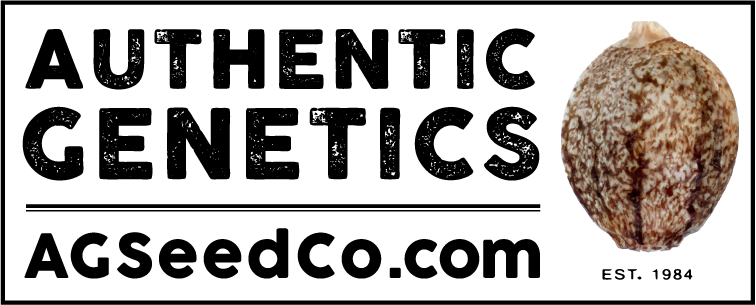
Purple expressions in cannabis genetics are natural and are largely dependent on the flavonoids within the flower.
Many people in the cannabis community wrongly think that flavonoids (or bioflavonoids; from the Latin word flavus, meaning yellow) have something to do with flavor, but in fact, it has to do with color.
Depending on the variety of cannabis, expressions of purple are commonly found in Afghan, Pakistan, Hindu Kush genetics, sometimes only expressing the darker tones in a colder climate or with a cold snap around harvest.
So in short, nobody made purple cannabis, mother nature is solely responsible.
Mostly the Afghan genetics are the genetics responsible for the purple colors in broad leaflet cannabis, but I have also seen purple expressions in 100-percent Colombian, Original Haze (seeds of which we will be offering shortly).
Two of the earliest purple cultivars to be circulated around northern California as cuttings were:
Purple Kush, which was a cross of Hindu Kush and Afghan, was released as a cutting by a local Bay Area cannabis company called Trichome Technologies in or around 1995/96. I think that this initial cutting was responsible for a lot of the purple that was subsequently bred by Northern California growers to create even more purple varieties.
The grower who owns Trichome Technologies is named Kenneth Morrow and has been very innovative in both breeding and extraction. You can see some of his writings here.
“The legend. Purple Kush. This defines the word purple when talking about cannabis. Purple Kush (originally Ultraviolet) made by Kenneth from Trichome Technologies is the best tasting purple, period." - from bayareagenetics.com
Sometime after 2000, GDP or Granddaddy Purple started to become popular and is incorrectly associated with a Bay Area activist by the name of Ken Estes, but Ken did not breed it and had nothing to do with its inception. Ken was just another person who was given a cutting and change the name of it.
In a Youtube video, you can see Ken tell the real story, which is that he got it from somebody else.
Cuttings (clones) have been circulating around California since the 90’s and sadly many people have been quick to take credit for other people’s work and have changed the name of varieties to pretend that they came up with it, when in fact it is an exact DNA copy of a cutting already circulating, as we started to see when the cannabis community began to do DNA testing through a company called Phylos.
Please see this “clone group” of "31 cuts”, of GDP, which means that the exact same DNA has been tested and came in under damn near 31 different names.
Because of this discrepancy in genetic labeling, it makes it really hard for breeders and historians like myself, to take origin stories within the cannabis community that seriously.
Click here to see some of the authentic purple genetics we offer!

